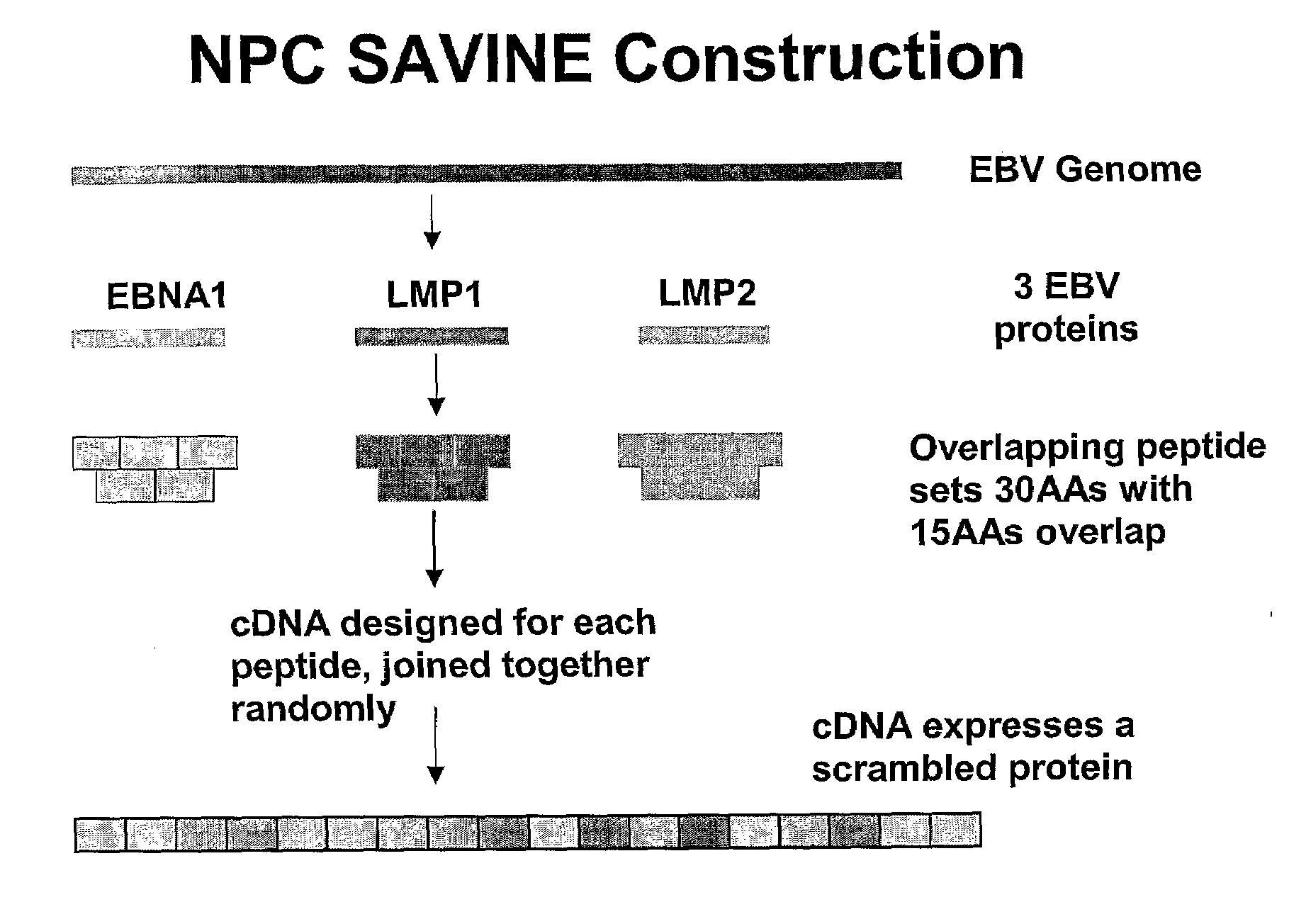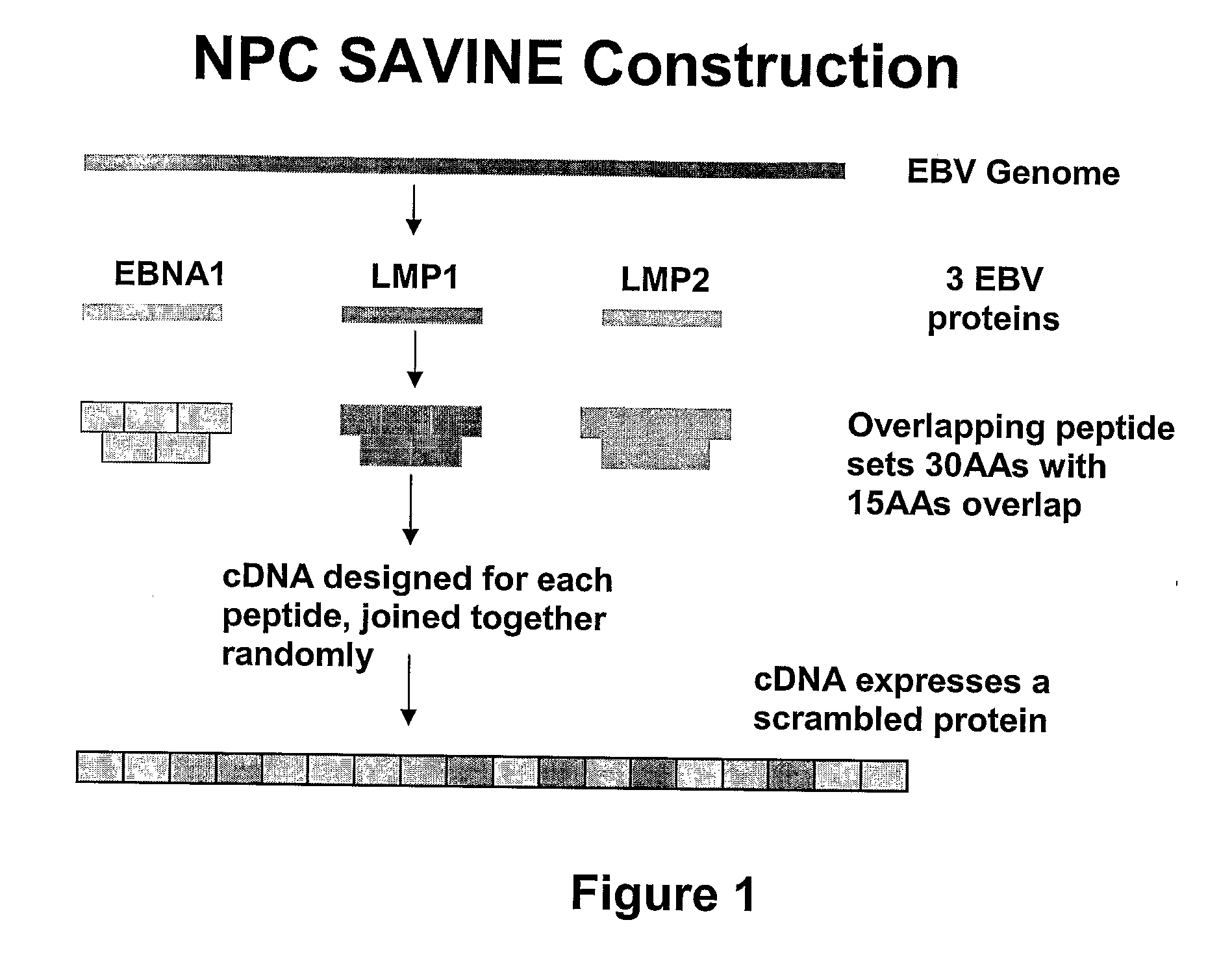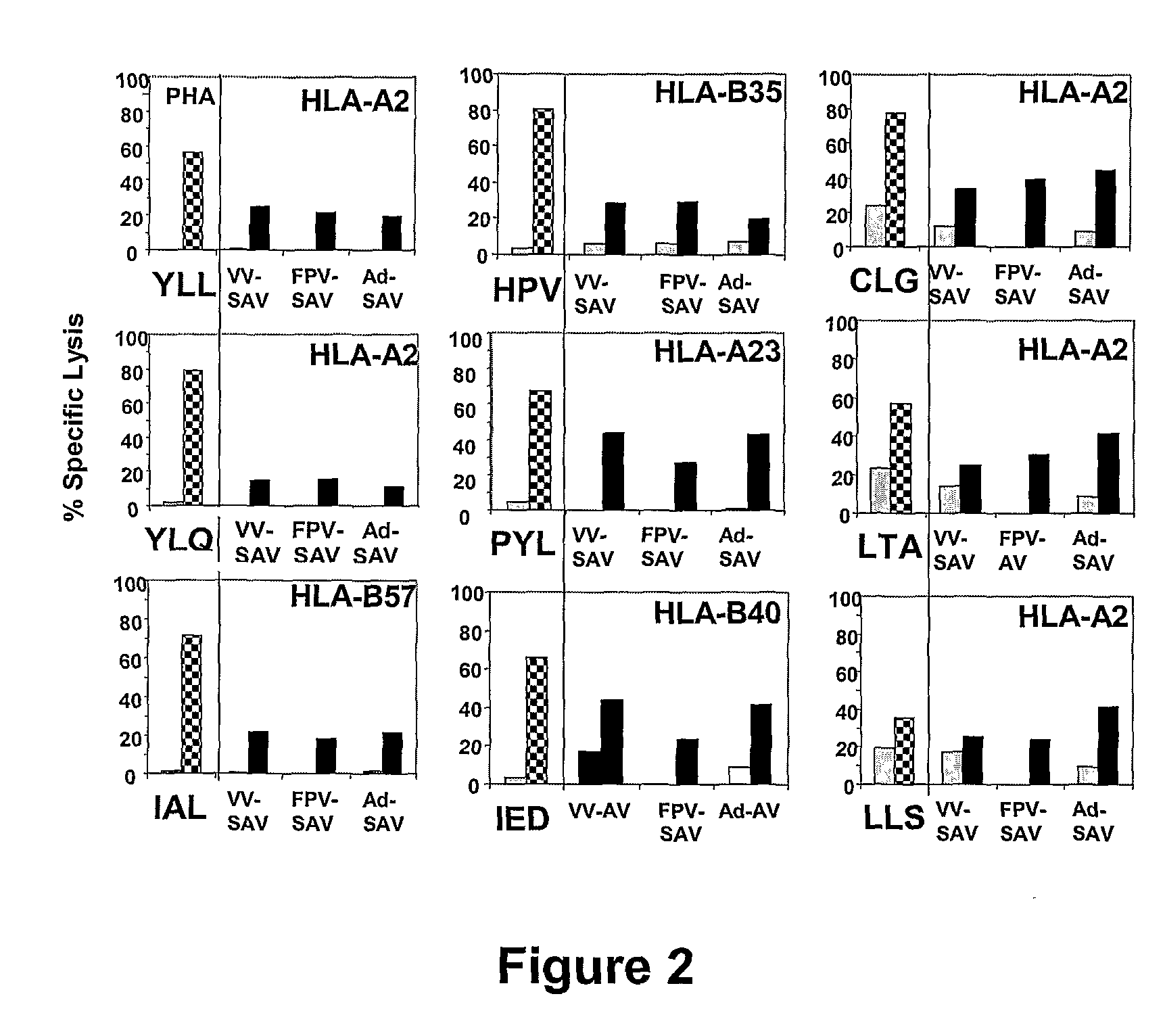Treatment of epstein-barr virus-associated diseases
a technology for epstein-barr virus and epstein-barr virus, which is applied in the direction of viral antigen ingredients, carrier-bound antigen/hapten ingredients, peptide sources, etc., can solve the problems of preventing the progress of treatment, preventing the possibility of extending the application strategy to npc and hl, and affecting the stability of polynucleotides. , to achieve the effect of enhancing in vivo translation and
- Summary
- Abstract
- Description
- Claims
- Application Information
AI Technical Summary
Benefits of technology
Problems solved by technology
Method used
Image
Examples
example 1
General Methods
1.1 Construction of an NPC SAVINE
[0187]DNA sequences encoding the EBNA1, LMP1 and LMP2 proteins were constructed using sequence-specific overlapping oligonucleotides varying in length from 20 to 100 bp (FIG. 1). Sequences were joined together by stepwise asymmetric PCR to create subcassettes. These subcassettes were joined together using restriction digestion and PCR to develop the final NPC SAVINE construct of 6.8 kb. This construct was then cloned into the replication deficient adenovirus vector Ad5F35. The recombinant adenovirus expressing SAVINE construct (AdSAVINE) was obtained by transfecting into HEK293 cells. This SAVINE construct was also inserted into vaccinia and fowl pox virus delivery vectors (see Thomson S. A., Jaramillo A. B., Shoobridge M., Dunstan K. J., Everett B., Ranasinghe C., Kent S. J., Gao K., Medveckzy C. J., French R. A., Ramshaw I. A. Development Of A Synthetic Consensus Sequence Scrambled Antigen HIV-1 Vaccine Designed for Global Use (2005)...
example 2
DNA Sequence Encoding SAVINE Protein
[0198]The scrambled DNA sequence encoding the SAVINE protein is disclosed as SEQ ID NO:1. The protein encoded by SEQ ID NO:1 consists of randomised overlapping amino sequences from EBNA1, LMP2 and LMP1. The encoded peptide sequences are 30 amino acids drawn from these proteins overlapping by 15 amino acids. This SAVINE protein has been inserted into Ad5 / F35, vaccinia virus and fowlpox virus vectors.
example 3
The Defined Epitopes within the SAVINE Protein Efficiently Process and Present to EBNA1, LMP1 and LMP2 T Cells
[0199]HLA-matched fibroblasts infected with either vaccinia, fowlpox or adenovirus expressing the SAVINE protein showed cytolytic activity against EBNA1, LMP1 and LMP2 peptide-specific CTL whereas the fibroblasts infected with vaccinia TK-, empty adenovirus or uninfected fibroblasts were not lysed (FIG. 2).
[0200]FIG. 2 demonstrates that the defined epitope-specific CTL polyclonal lines or CTL clones within EBNA1 (HPV, HLA-B35 restricted), LMP1 (YLL and YLQ, HLA A2-restricted; IAL, HLA B35-restricted) and LMP2 (CLG, LTA and LLS, HLA A2-restricted; PYL, HLA-A23-restricted; IED, HLA-B40-restricted) antigens were generated from four EBV seropositive healthy donors. The specificity of these CTL was tested against the defined epitope-loaded PHA blasts in a cytolytic assay. Subsequently, to find out whether the defined epitopes within EBNA1, LMP1 and LMP2 antigens were endogenously...
PUM
| Property | Measurement | Unit |
|---|---|---|
| Efficiency | aaaaa | aaaaa |
| Nucleic acid sequence | aaaaa | aaaaa |
| Immunogenicity | aaaaa | aaaaa |
Abstract
Description
Claims
Application Information
 Login to View More
Login to View More - R&D
- Intellectual Property
- Life Sciences
- Materials
- Tech Scout
- Unparalleled Data Quality
- Higher Quality Content
- 60% Fewer Hallucinations
Browse by: Latest US Patents, China's latest patents, Technical Efficacy Thesaurus, Application Domain, Technology Topic, Popular Technical Reports.
© 2025 PatSnap. All rights reserved.Legal|Privacy policy|Modern Slavery Act Transparency Statement|Sitemap|About US| Contact US: help@patsnap.com



